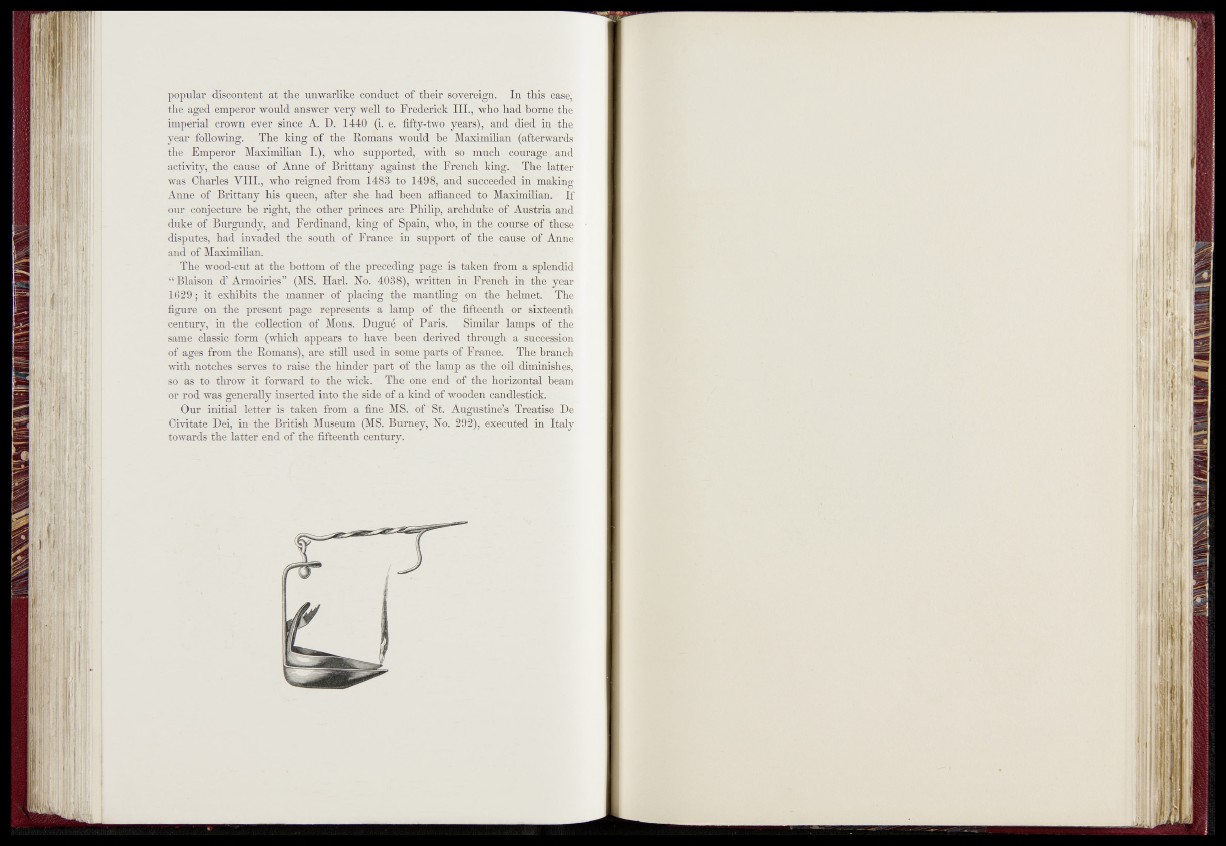
popular discontent atÉpjfe unwarlike.conduct-of their sovereign. ‘ CrAthis ease,
Stfi^aged emperor would answer veryjwfeirto Frederick III.,,who F’ad&gneMe
imperial crown ever since A. D. 1440 (i. o, fifty-jfrwo year»), and died;iu|^p
year following.- The king of th e-Roimns'w^ouldÏhe Maximilian,.(afterwards
the Emperor Maximilian I.), who supported, with -so ruu,cli courage,And
activity,^ tKA'cause. of ^Mine^pïl Brittany. againsttmwFrènch -king.. The flatter
was Gharleö YIII.j whcrreigned .froffi 1483 to 1498,vand succeeded->in,piaking
Anne of Brittany-his1 queen, after she had been-affianced to Maximilian*. ?: If
oW_ conjecture he right, thejïdthssö princes are. Philip, archduk'edqf Austria and
dukèsof Burgundy, and .Ferdinand, king of Spain, who, in the1 cpdjke/bf^ these
disputes, had invaded the souths of France in support of the cause *of&An ne
andpff Maximilian.
ThV^vpQd^iut at the bottom, of- -the preceding page is taken iromJaMplendid
-^Blaison d’ Armoiries” (MS. Hark JNo.’r 4038), written ‘in, French tin thj^, year
1629 ; it exhibits the maimer of placing the mantlihg on ^n ^ ’ffihtremi The
figure ’on the present-page, represênts“ a lamp of. the fifteenth, j a ^ sixteenth
century, in the colleetahn of Mons. Dugué of Paris. -Similar. lami3s?M^rlic‘
same -dassic form (which appears §tö have been derived“ thrpu^h- a
of Ages from the Romans), are alall used ifr^some parts ofrFrance.
with-notches-serves to raise the hinder part' oftthblamp asttlie^ ^ B m S S Ies.
SO-as to throw it forward"!» the wiek.’ The onegemCmuthe-hoiaamtal bqjhin
or rod was generaUy inserted into the side of- .a kind' -
Our initial letter is taken from a fine MS. fèfrSt.^AugiAtiné’s. Treatise &De
Cratate' Da; in:the British Museum' (MS-- Burney£]^d^292^executtid^ij^taTy
towards die lattèf end of the fifteenth century. -